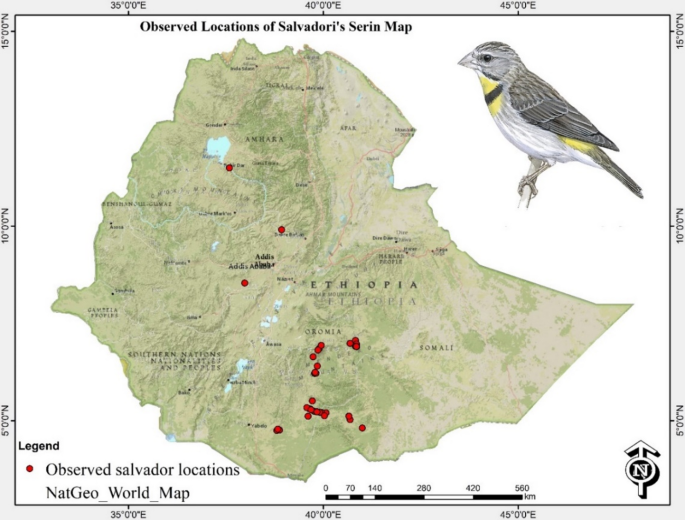Report on Greenhouse Gas Emissions from Major Meat and Dairy Corporations
Executive Summary
A recent assessment reveals that the world’s leading meat and dairy companies are generating greenhouse gas emissions, particularly methane, at a scale that surpasses the combined emissions of the European Union and the United Kingdom. This report analyzes these findings, highlighting their profound implications for the achievement of the United Nations Sustainable Development Goals (SDGs), with a primary focus on SDG 13 (Climate Action), SDG 15 (Life on Land), and SDG 12 (Responsible Consumption and Production).
Analysis of Sectoral Emissions and Corporate Impact
The analysis, conducted by the research firm Profundo in collaboration with environmental advocacy groups, quantifies the climate impact of 45 major livestock and dairy corporations. The findings underscore a significant gap in corporate accountability and environmental regulation, which directly impedes progress towards global climate targets.
Key Findings
- Livestock, predominantly beef and dairy cattle, contributes approximately one-third of global methane emissions, a potent greenhouse gas.
- The 45 companies analyzed generated an estimated 1 billion tons of greenhouse gas emissions in 2023, comparable to the emissions of major oil-producing nations like Saudi Arabia.
- Unlike the energy sector, meat and dairy companies are generally not required to report their greenhouse gas emissions, hindering efforts to enforce accountability and achieve SDG 12.6 (Encourage companies to adopt sustainable practices and to integrate sustainability information into their reporting cycle).
Top Emitting Corporations
The report identifies a concentration of emissions among a few key players, whose industrial practices conflict with the principles of sustainable production.
- JBS (Brazil)
- Marfrig (Brazil)
- Minerva (Brazil)
- Tyson (USA)
- Cargill (USA)
Together, these five corporations accounted for nearly half of the total emissions analyzed. JBS, the world’s largest meat company, was responsible for emissions exceeding the combined reported methane emissions of fossil fuel giants ExxonMobil and Shell.
Implications for Sustainable Development Goals (SDGs)
The unchecked emissions from the industrial livestock sector represent a direct threat to multiple SDGs. The current trajectory of production and consumption is unsustainable and requires urgent policy intervention.
SDG 13: Climate Action
The massive volume of methane and other greenhouse gases emitted by these companies directly undermines efforts to meet the targets of the Paris Agreement. Research indicates that even with a complete cessation of fossil fuel use, emissions from the global food system alone would breach established climate targets. The report stresses that without significant reductions in livestock emissions, which necessitates a reduction in animal populations, achieving SDG 13 is not feasible.
SDG 15: Life on Land
The activities of the livestock industry, particularly in Brazil, are a primary driver of environmental degradation. Cattle ranching is responsible for nearly 80 percent of deforestation in the Amazon region, destroying vital ecosystems and biodiversity. This practice is in direct opposition to the objectives of SDG 15, which calls for halting deforestation and protecting terrestrial ecosystems.
SDG 12: Responsible Consumption and Production
The report highlights a systemic failure in corporate responsibility. Many companies have set ambitious growth targets that contradict their voluntary climate pledges. This lack of commitment to sustainable production patterns is a major barrier to achieving SDG 12. The need for mandatory, standardized emissions reporting is critical for fostering transparency and holding corporations accountable.
Corporate Accountability and the Regulatory Landscape
Despite public commitments, the actions of several major corporations indicate a retreat from climate responsibility, while the regulatory environment remains inadequate.
Discrepancies in Corporate Commitments
- Legal Challenges: JBS faced a lawsuit from the New York Attorney General for allegedly misleading the public about its plan to achieve net-zero emissions by 2040 while simultaneously planning to increase production.
- Weakened Pledges: Several companies have recently weakened their voluntary climate commitments. Nestlé withdrew from a dairy industry alliance focused on methane reduction, JBS reclassified its net-zero goals as “aspirational,” and Tyson dropped its “climate smart” beef label.
Future Regulatory Developments
A positive shift towards greater accountability is on the horizon. Upcoming regulations in California and the European Union will require large corporations, including those in the food and agriculture sector, to report emissions across their supply chains. This move is a crucial step towards aligning corporate practices with SDG 12 and SDG 13, creating a framework for transparency and verifiable emissions reductions.
Analysis of Sustainable Development Goals in the Article
1. Which SDGs are addressed or connected to the issues highlighted in the article?
-
SDG 13: Climate Action
- The entire article focuses on the significant contribution of the meat and dairy industry to climate change through methane and other greenhouse gas emissions. It explicitly states that “Livestock, mostly beef and dairy cattle, account for roughly one-third of global emissions of methane,” directly linking the industry’s practices to the urgent need for climate action.
-
SDG 15: Life on Land
- The article connects the meat industry, particularly cattle ranching, to severe environmental degradation. It highlights that “The Brazilian beef industry has long been blamed for the destruction of the world’s largest rainforest” and that “Cattle ranching is the biggest driver of deforestation in the region, accounting for nearly 80 percent.” This directly addresses the goal of protecting terrestrial ecosystems and halting deforestation.
-
SDG 12: Responsible Consumption and Production
- The article critiques the unsustainable production patterns of major meat and dairy companies. It points out the lack of corporate accountability, stating that “beef and dairy companies are not required to report their greenhouse gas emissions.” The discussion about companies walking back voluntary commitments and the call for “more transparency around companies’ reporting” aligns with the goal of encouraging sustainable practices and corporate reporting.
-
SDG 2: Zero Hunger
- While not the primary focus, the article touches upon the sustainability of global food systems. It mentions that “emissions from the current food system would surpass climate targets” and that companies plan to “increase production to match an estimated 70 percent increase in global meat consumption by 2050.” This relates to the challenge of creating sustainable food production systems (Target 2.4) that can feed a growing population without destroying the environment.
2. What specific targets under those SDGs can be identified based on the article’s content?
-
Under SDG 13 (Climate Action):
- Target 13.2: Integrate climate change measures into national policies, strategies and planning. The article directly addresses the failure to meet this target by stating that livestock emissions “are not really mentioned or confronted in government policy right now” and that “only a handful of countries that have signed on to the Paris climate agreement have set targets to cut emissions from livestock.”
-
Under SDG 15 (Life on Land):
- Target 15.2: Promote the implementation of sustainable management of all types of forests, halt deforestation, restore degraded forests and substantially increase afforestation and reforestation globally. The article’s focus on cattle ranching being the primary driver of deforestation in the Amazon, where ranchers “cut and burn huge swaths of trees to clear pasture,” shows a direct conflict with this target.
-
Under SDG 12 (Responsible Consumption and Production):
- Target 12.6: Encourage companies, especially large and transnational companies, to adopt sustainable practices and to integrate sustainability information into their reporting cycle. The article’s central theme is the lack of mandatory emissions reporting for meat and dairy companies. It highlights how companies like JBS and Tyson have made “weak commitments” or walked back voluntary targets, underscoring the need for the actions described in this target. The mention that “California and the European Union will start requiring large companies… to report emissions” is a direct example of implementing this target.
3. Are there any indicators mentioned or implied in the article that can be used to measure progress towards the identified targets?
- Greenhouse Gas Emissions from the Agricultural Sector: The article provides specific data points that serve as indicators, such as the “1 billion tons of greenhouse gas emissions in 2023” from 45 major companies and the fact that livestock accounts for “roughly one-third of global emissions of methane.” Tracking these emission figures over time would measure progress.
- Rate of Deforestation: The article implies this indicator by stating that cattle ranching is responsible for “nearly 80 percent” of deforestation in the Amazon. A reduction in this percentage would indicate progress towards Target 15.2.
- Number of Companies Reporting on Sustainability: The article highlights that companies are not required to report emissions. An indicator for Target 12.6 would be the number or percentage of large meat and dairy companies that voluntarily or mandatorily report their full supply chain emissions, using an “agreed-upon methodology.”
- Number of Countries with Climate Policies for Agriculture: The article notes that “only a handful of countries… have set targets to cut emissions from livestock.” An increase in the number of countries integrating agricultural emissions into their national climate plans would be a clear indicator of progress for Target 13.2.
4. Table of SDGs, Targets, and Indicators
| SDGs | Targets | Indicators |
|---|---|---|
| SDG 13: Climate Action | Target 13.2: Integrate climate change measures into national policies, strategies and planning. |
|
| SDG 15: Life on Land | Target 15.2: Halt deforestation and restore degraded forests. |
|
| SDG 12: Responsible Consumption and Production | Target 12.6: Encourage companies to adopt sustainable practices and integrate sustainability information into their reporting cycle. |
|
Source: insideclimatenews.org







